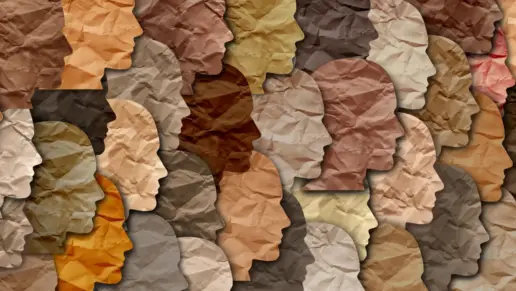What is Chronic Pain?
There is no singular or universal chronic pain definition. All humans experience pain at one time or another in their lives. Pain can come and go quickly, but occasional pain is much different than chronic pain.
The definition of chronic pain relates to pain that can occur anywhere in the body, lasts more than three months, and impacts nearly every aspect of daily life such as sleep, appetite, energy levels, moods, and interpersonal relationships. According to the Centers for Disease Control and Prevention (CDC), more than 24% of American adults suffer from chronic pain.
Chronic pain may result from acute or chronic health conditions or from lifestyle causes, such as long-term poor posture or bending, years of heavy lifting or carrying heavy objects, obesity, or a history of injury. Unfortunately, chronic pain often results in depression, anxiety, and social isolation.
Regardless of the reason, chronic pain negatively impacts an individual’s overall wellbeing.
If you’re beginning to explore treatment options or want general guidance on available programs, you can learn more about rehab options to understand what types of support may fit your needs.
How to Manage Chronic Pain?
Treating chronic pain can be difficult because symptoms are complex and vary, depending on the underlying cause. Chronic back pain, for instance, may be the result of injury, aging, or a musculoskeletal condition.
Currently, treatment incorporates the use of various therapies, including physical therapy, medications, biofeedback, psychological therapies such as cognitive behavioral therapy, and dietary interventions.
Medications prescribed by doctors for chronic pain can include anti-inflammatory drugs, steroids, muscle relaxers, antidepressants, anticonvulsants, anti seizure medications and opioids.
Chronic Pain and Addiction
Unfortunately, many of the medications used to treat the most severe chronic pain are also extremely addictive. The use of opioid drugs such as Percocet, Oxycontin, and Vicodin can lead to physical and mental dependence.
One contributing factor to opioid dependence is opioid induced hyperalgesia, which occurs when the pain receptors in the brain become desensitized to the drug, and the body becomes more sensitive to the pain. This begins a cycle of requiring higher doses of medications to get relief, and you develop a dependency that leads to addiction.
Reducing the Risk of Addiction to Pain Medication
It’s important to keep in mind that chronic pain is a major medical condition that needs treatment. The long term impact of certain treatments must be considered when managing chronic pain. Such a treatment plan should aim to decrease symptoms and return individuals to their highest level of functioning.
Individuals and their medical providers should consider an approach that does not increase the risk of addiction. When looking at chronic pain and management, using non-pharmaceutical interventions, such as heat and cold therapy, massage, acupuncture, and talk therapy, can be just as effective as medication for some people.
Individuals under chronic pain management have found chiropractors, exercise, and physical therapy to be highly effective in reducing pain. When pharmaceutical management is necessary, practitioners should consider the use of nonsteroidal anti-inflammatory medications, antidepressants, and steroidal injections before considering long-term opioid medications.
Facts About Chronic Pain
Seeking care from specialized pain management practitioners is extremely important. Research has shown that women are affected by chronic pain more than men, and people over the age of 65 and those with American Indian or Alaska Native heritage are more likely to be impacted. The most common chronic pain locations are in the lower back, hip, knee, and foot.
Untreated chronic pain can harm overall health. Untreated chronic pain can lead to mental health disorders like depression, anxiety, and poor sleep. It can also contribute to hypertension, impaired immune system response, and cognitive impairment.
The negative impact of chronic pain is often referred to as the “terrible triad” of suffering. Pain creates a cycle of irritability, leading to insomnia and weariness, leading to more irritability, which causes depression and increased pain. This process not only impacts an individual’s physical health, but creates stress on their relationships, professional careers, and families.
How Do I Know if Someone Has an Addiction?
When individuals use opioid medications for pain relief, it’s important to be aware of the signs of addiction. Symptoms of addiction look different from individual to individual and depend on the severity of the addiction.
Individuals with addiction often have intense urges to use the drug regularly, sometimes daily or several times per day. They need to take larger amounts of the drug to feel the desired effects. They may experience physical and psychological withdrawal symptoms when not taking the drug or trying to quit but not being able to do so.
Eventually, family members notice changes in physical appearance such as weight loss or gain, neglected hygiene, or changes in energy levels. Many times they miss obligations at work, school, or home.
Where Can I Find Information on Substance Abuse Treatment?
There is hope for individuals who need to know how to manage chronic pain. Your pain management team can be a wonderful resource for finding substance abuse treatment. They can help individuals and families find appropriate mental health professionals and treatment centers that address not only the addiction, but the symptoms of chronic pain as well.
The Substance Abuse and Mental Health Services Administration (SAMHSA) is an agency of the United States government that can help you locate appropriate services. Local support groups are another good resource for providers and treatment centers that can address both conditions. You can also learn more about rehab options if you want to compare different levels of care or find programs that address both chronic pain and addiction.
What Are the Treatment Options for Drug Addiction?
Treatment options for drug addiction depend on several factors. These include severity and duration of the addiction, relapse risk, medical condition, financial considerations, family or work commitments, and your availability to commit to chronic pain care. Determining the appropriate level of care begins with an assessment by qualified medical or mental health professionals.
Levels of care range from the most intensive treatment options to aftercare programs. Medical detox or inpatient treatment is considered the highest level of care. During inpatient treatment, individuals reside at a treatment facility for some time, usually an average 28-30 days.
They will work with their mental health and addictions team to create a treatment plan to address chronic pain and create a future with healthy coping skills and addiction relapse prevention.
Outpatient programs provide comprehensive care for individuals with moderate to severe addiction but who need flexibility. The most comprehensive outpatient option is a partial hospitalization program (PHP). PHP provides highly structured programs several hours per week, on average at least 20 hours.
These programs include individual and group therapy, utilizing various modalities including cognitive behavioral therapy, motivational interviewing, contingency management or dialectical behavioral therapy.
Other outpatient programs include intensive outpatient programs (IOP) that provide treatment for individuals who do not require 24/7 supervision, but still need comprehensive treatment options several times each week. These programs utilize individual and group therapy, family counseling, peer support, and life skill development to help prevent relapse and promote a sober future.
After completion of intensive programs, many individuals benefit from aftercare programs that offer continued peer support and stress management skill development.
For people with chronic pain, weaning off the addictive substance and finding appropriate pain management techniques may be necessary for long term addiction recovery.
Addiction Centers That Treat Opioid Addiction
Finding facilities near you…





